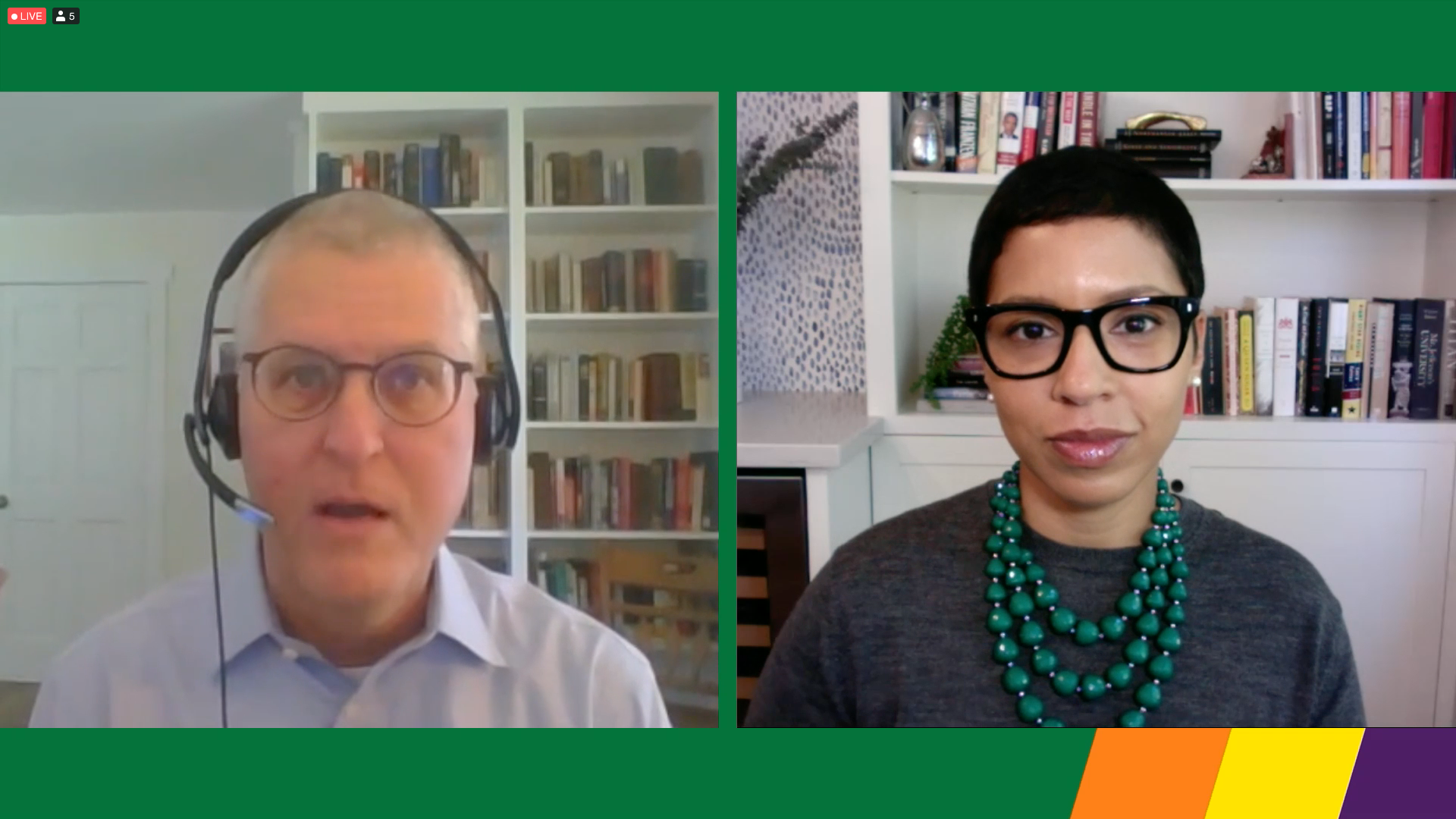Event Recap
Brave new court: Melissa Murray on the new conservative majority

on Jul 23, 2021 at 5:17 pm

Melissa Murray refused to recant her view: The newly minted conservative court is poised to effect great change in the country. Murray, a professor of law at New York University and co-host of the podcast Strict Scrutiny, co-authored an article last September predicting that the transition on the Supreme Court from Justice Ruth Bader Ginsburg to Justice Amy Coney Barrett would spell “seismic consequences.” In conversation on Thursday with John Barrett, a professor of law at St. John’s University, she cautioned “although we didn’t see that seismic shift in this particular term, this is just the first term.”
The public conversation was sponsored by the Chautauqua Institution for its 17th Robert H. Jackson Lecture, an annual talk featuring Supreme Court experts. The event took the form of an interview in which Barrett (the professor, not the justice) posed questions to Murray about the state of the court.
Barrett suggested that the 2020-21 term seemed relatively quiet in part because of the low number of cases the justices chose to hear. The court decided only 57 cases after full briefing and argument, the second-lowest since the Civil War. “Is the court taking a siesta as a way of gulling us or… gliding into a more dramatic shift?” he asked.
Murray noted that the limited docket this term might have been connected to the backdrop of the presidential election. While ultimately the election did not result in litigation comparable to the 2000 case of Bush v. Gore, the justices could have taken a lighter load in anticipation of making room on the docket for potential election challenges, she said. In addition, the 57 decisions in argued cases do not include many important rulings on the shadow docket, where disputes are resolved without the benefit of full briefing and argument. Several important shadow-docket cases were resolved along “traditionally ideological fractures,” Murray noted.
Among the most significant shadow-docket rulings were in emergency requests from religious groups seeking exemptions from state and local social-distancing policies related to COVID-19. In the summer of 2020, when Ginsburg was still on the court, the court rejected those requests in 5-4 decisions, with Chief Justice John Roberts joining the liberal justices. With the addition of Justice Amy Coney Barrett, however, the conservative wing of the court no longer needs the vote of the chief justice, Murray said. This can be seen in decisions like Tandon v. Newsom, in which the group began siding with religious groups in their requests for exemptions from COVID-related restrictions. By only looking at the merits docket, commentators who claim that the court is “more moderate, less partisan” fail to take into account the critical role of the shadow docket, Murray continued.
Moreover, she said, decisions that are lauded for support across ideological borders often have limited impact. For instance, in a school-speech case that garnered massive public attention, Mahanoy Area School District v. B.L., the justices ruled 8-1 in favor of the student. But the decision was resolved on narrow grounds and did not define the conditions for school regulation of speech – “a narrow decision that doesn’t say much,” as Murray put it. Similarly, what was notable in Fulton v. City of Philadelphia was that the court had an opportunity to give a more “maximalist” push and overturn its 1990 decision in Employment Division v. Smith (where the court ruled that individuals usually cannot obtain religious exemptions from laws that apply to everyone) but refrained from doing so — thus, again, limiting the scope of the decision to the specific facts of the case. Murray hypothesized that the liberal justices may have joined the opinion so as to stem the tide of sweeping change in the area of religious liberty.
To round off the interview, Barrett sought out Murray’s position in the court-reform conversation. “I’m not much of a proponent of anything in that respect,” Murray responded. She believes, however, that the “specter of court reform” has shaped how debate occurs at the court. Now that “court reform” has become a part of the common lexicon, the justices are aware that dramatic moves may result in an acceleration of the conversation and any resulting actions. If the 2020-21 term was not the year of “maximalist changes” that was anticipated, it may be in part due to the influence of the court-reform conversation. Furthermore, the court “really does care about its legitimacy with the public,” Murray concluded. “It’s not like Congress – it doesn’t have the power of the purse. It’s not like the presidency – it doesn’t have the power of the sword. It really only has the power of its own legitimacy as a way to make the American public and the other branches of government comply with its rulings. To maintain that legitimacy is to maintain the power of the court.”


